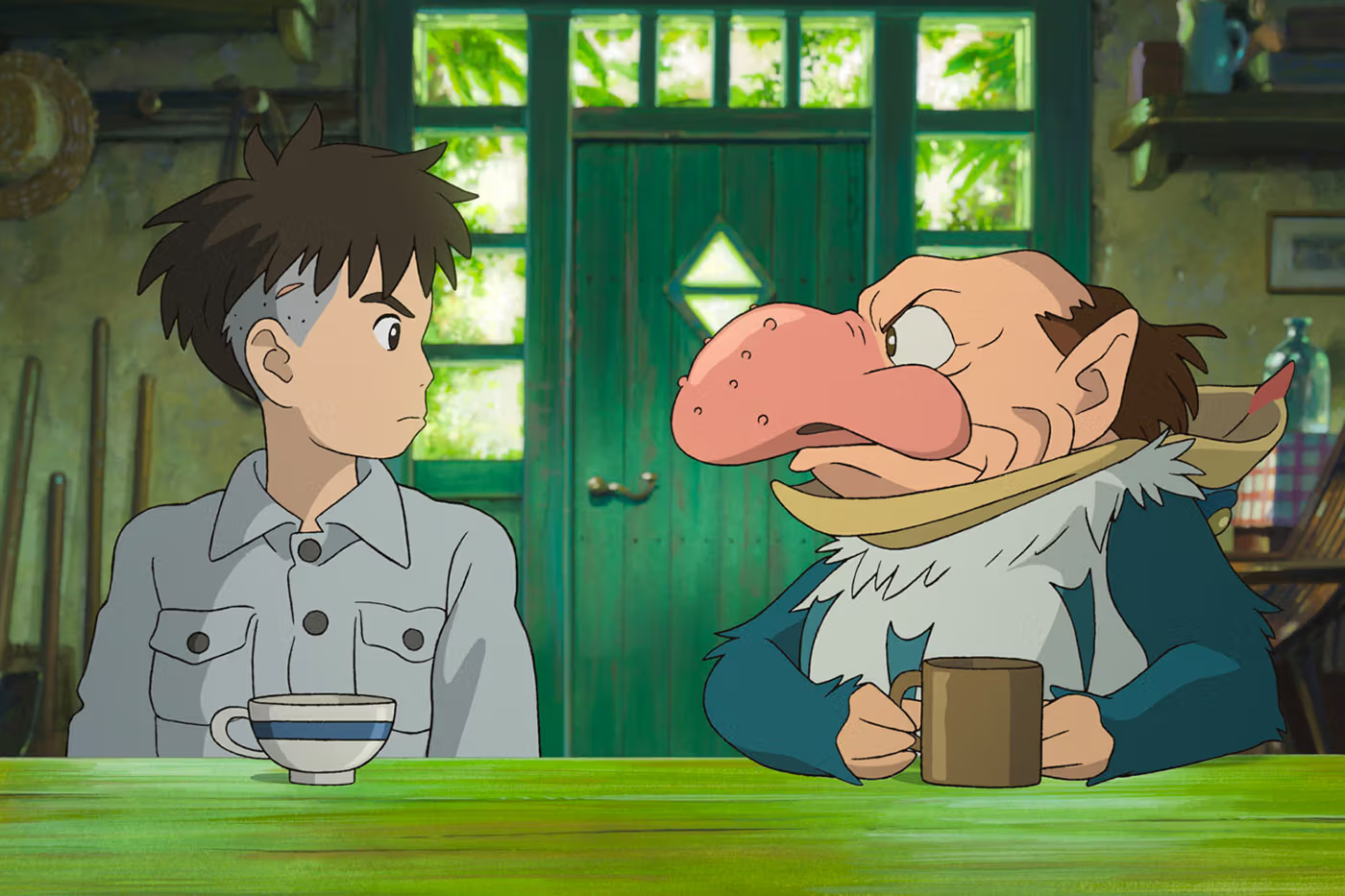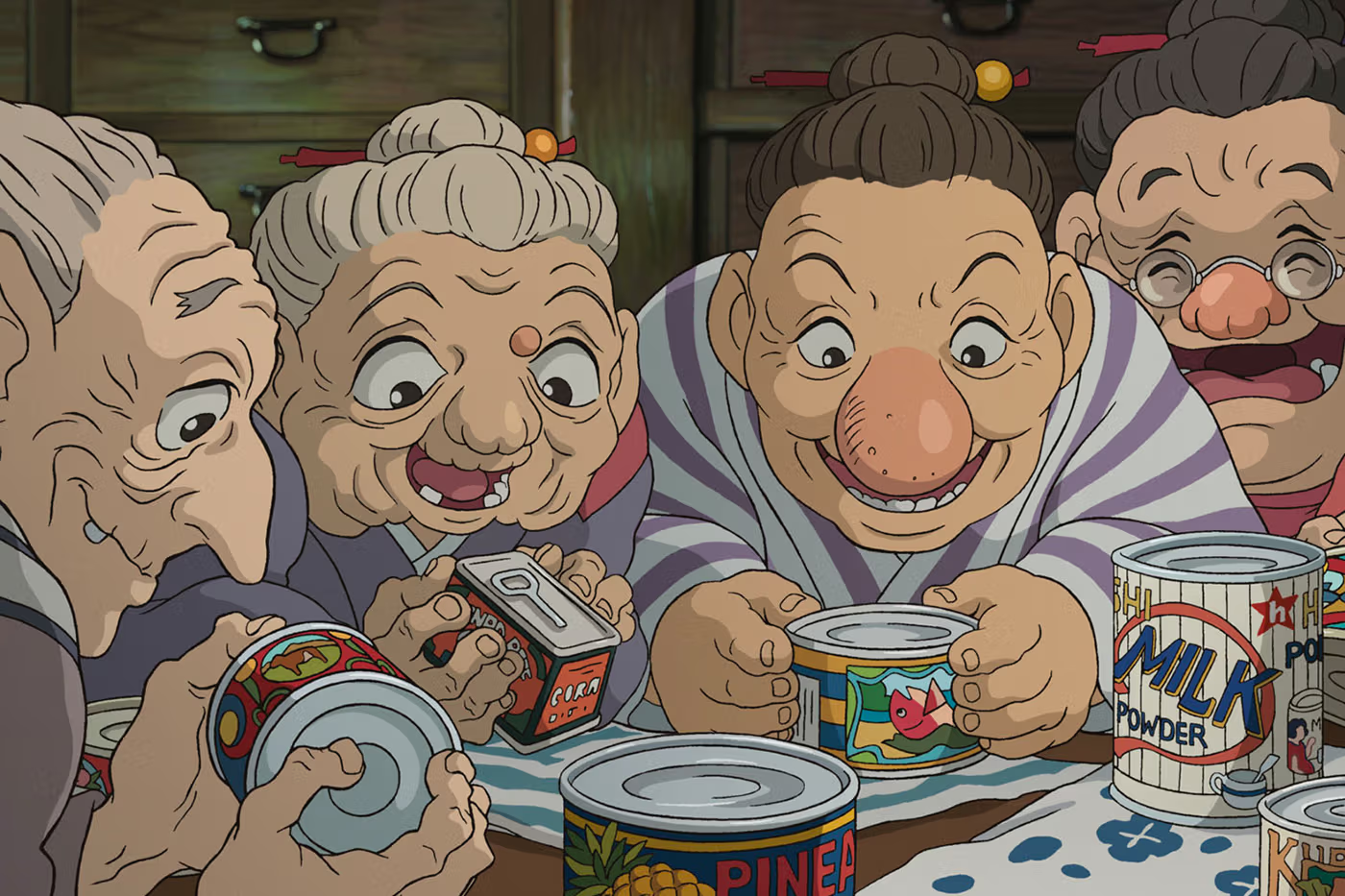

“A lot of strange things happen in this place.”
When the rumblings and rumors eventually gave way to legitimate news—that Hayao Miyazaki would come out of retirement for one final project—what will almost surely be the legendary animation director’s swan song1 was initially given the title How Do You Live? I wasn’t worried that Miyazaki would return as a mere nostalgia act, but the title suggested a cumulative gravity and didactic intention that I thought might burden the final product. I am happy to say my fears were misguided and that How Do You Live? would have been a completely appropriate title. Released as The Boy and the Heron, which strips away any moral or philosophical connotations in favor of a rather straightforward catalog description, the film actually does play a bit like a greatest hits album and does indulge in some blunt philosophizing, but it does these things on the margins of a film dominated by multivalent symbolism, universal humor, touches of menace and morbidity, evocative music, and the casual wonderment that’s become synonymous with Studio Ghibli. It’s not quite an apotheosis (I feel like The Wind Rises or Spirited Away are probably the best as far as all-encompassing summations go though neither are my favorite Miyazaki), but it’s worth thinking about it in those terms.
Unfolding against the backdrop of WWII, the film centers on a young boy named Mahito (Luca Padovan in the English dub) whose encounter with a belligerent talking heron (Robert Pattinson—say what?) leads him to a mysterious tower in the woods that serves as a gateway to a precarious shadow realm populated by man-eating parakeets, bubble-like spirits of the unborn, a pyrokinetic woman who may be Mahito’s dead mother as a child (Karen Fukuhara), and a wizened wizard (Mark Hamill) whose teetering tower of toy blocks keeps the entire dimension in-balance. Suffuse with fantastical scenarios that echo real-life dynamics in curious ways as well as mysterious and enchanting phenomena with no easy reading, the film is continually transporting the audience to the next phase of its ever-evolving dreamworld, never really allowing us to find a secure frame of reference from which to interpret everything that we see. The constant reorientation and obscure allegorizing does tend to overwhelm the storytelling, as character, relationships, story, and emotional swells are often compromised for the sake of phantasmagorical stream-of-consciousness spectacle. (I suspect there’s a cut scene or two that may exacerbate this as well.)

In the early portion of the film, which bears many biographical details, Mahito is clearly a standin for the filmmaker himself. And yet in the latter half of the film the protagonist comes to represent the viewer, with Miyazaki speaking to us through the wizard. At least that’s my take on it. After a lifetime of toil, the wizard can no longer keep up the balancing act. He realizes he must relinquish control. And besides, the blocks he uses are tainted by malice. His priceless gift, a set of carefully guarded, untainted blocks, is turned down by Mahito, the heir apparent, who believes he must first be delivered from his own sinful nature.
It’s a single multifaceted element in a film defined by them, but let me offer a few interpretations: for one, Miyazaki is sorry that he never groomed a legitimate successor, for just as there is no one to replace the wizard and keep the world spinning with his imagination so there’s no one to take the reins when Miyazaki finally calls it quits. For two, he’s burdened by his legacy; by having spent a lifetime trying to create things that might endure and enrich the world out of elements “tainted by malice.” For three, he’s at least somewhat regretful over having neglected his family for the sake of his career, for the wizard is Mahito’s granduncle, who many presumed dead but who had really been hiding in his tower tinkering in his own imagination.
All of that is a lot to say about an old man after watching a two hour cartoon he made, but anyway, more than all that, I think he’s also imploring his fans not to aspire to imitation. To master themselves, which will entail discovering their own personal artistic impulses and motives and voices. There are a million ways to stack the blocks to create a world of “bounty, peace, and beauty.” Miyazaki’s method is certainly one. Maybe you can juggle them. Maybe you don’t need to use blocks at all. Maybe trying to exert too much control over a chaotic universe is not an entirely healthy way of life in the first place.

Anyway, again, that’s just one elusive, beguiling shard in a jagged mosaic. If I haven’t mentioned how the film deals with familial loss, the cruel tricks and torments of memory and conscience, the role of imagination in processing grief and the limits of its utility, the way personal traumas ripple across generations, the intrusion of greater mysteries upon the orderly and rational and mundane (the heron’s hideous human teeth, the horrifying fish chorus, the swarm of frogs), the power and purpose of art, the great hope that death is not the end—it’s because those elements are still percolating on my brain’s backburner and haven’t quite settled yet. And I kind of like it that way.
But for instance, what are we supposed to make of the silliest of all the film’s creations, the googly-eyed parakeets, being also its most savage? What about when the film’s cutest, most Ghibli-est bubble spirits are intercepted on their presumed voyage to become fleshbound souls and devoured by pelicans trapped in the netherworld with no other form of sustenance? Explanations exist—the parakeets are the thoughtless hivemind masses, or the Japanese army, or the forces of capitalism; the bubble spirits are the creative ideas of an artist that only survive out of the sheer fecundity of his mind. But we don’t need these symbols (or even the story for that matter) to map directly onto reality when they stir within us uncommon feelings, when they move us to contemplation, when they cohere with the rest of Miyazaki’s cinematic enterprise to serve the function of great art.

That takes us back to the film’s original title: how do you live? How do you live, in spite of all the sorrow and suffering and strife? Where do we find the strength to do anything when everything withers and dies? Many find that purpose in pursuit of the true, the good, and the beautiful. But also, once you’ve stared into the abyss and returned to life with a fresh resolve, how do you live in the day to day, as you navigate the peeks and valleys of the human condition? The Boy and the Heron is a lament but also a challenge: to live with intention, to live with conviction, to live well. To use the words of one of my other favorite artists: “This is your life. Are you who you wanna be?”
1. Hmm.
Excellent